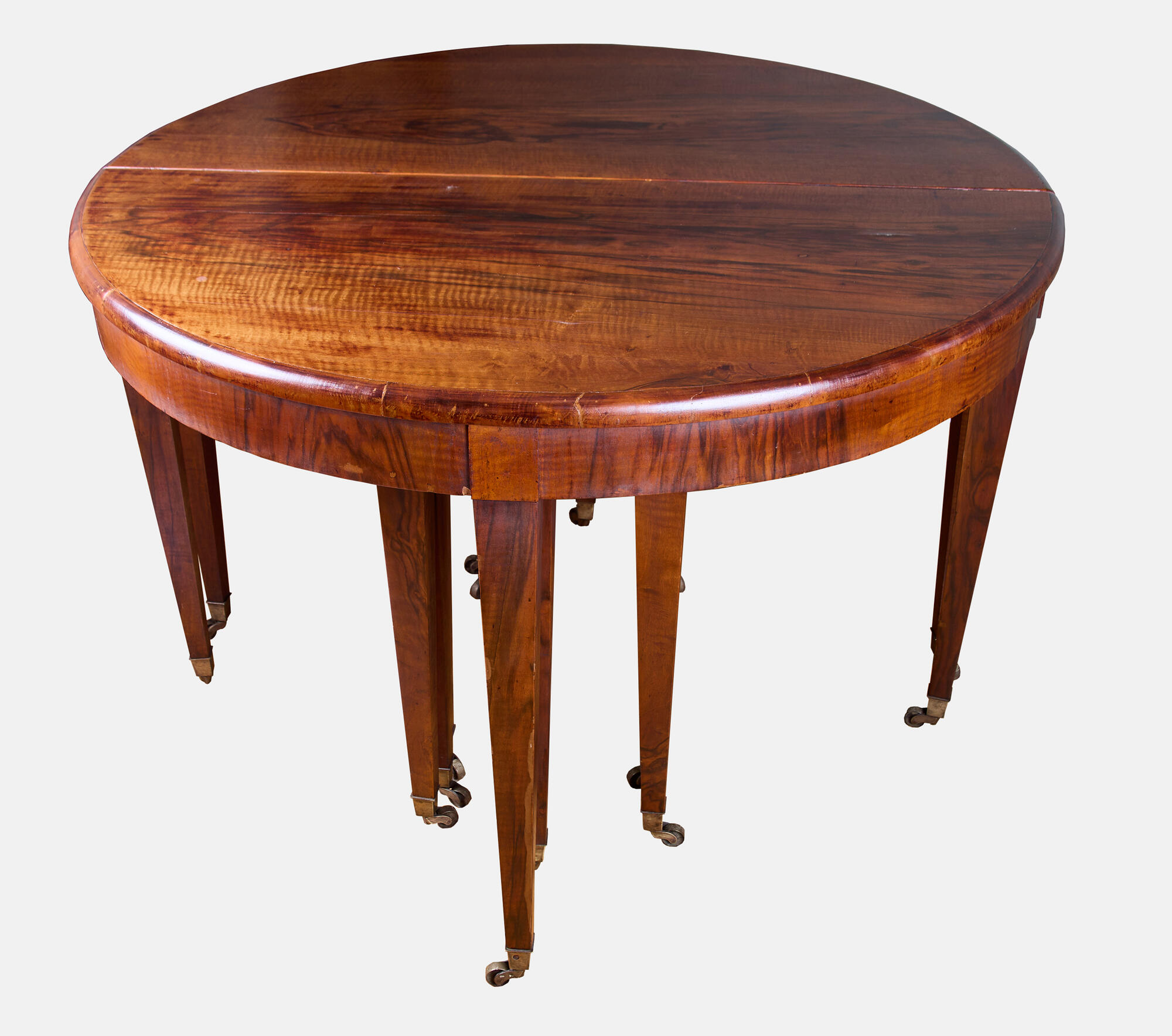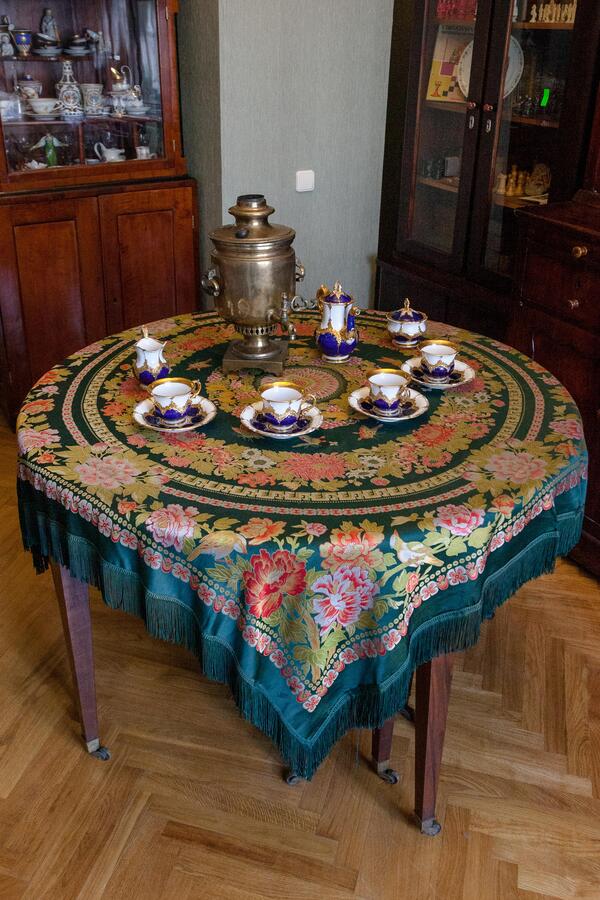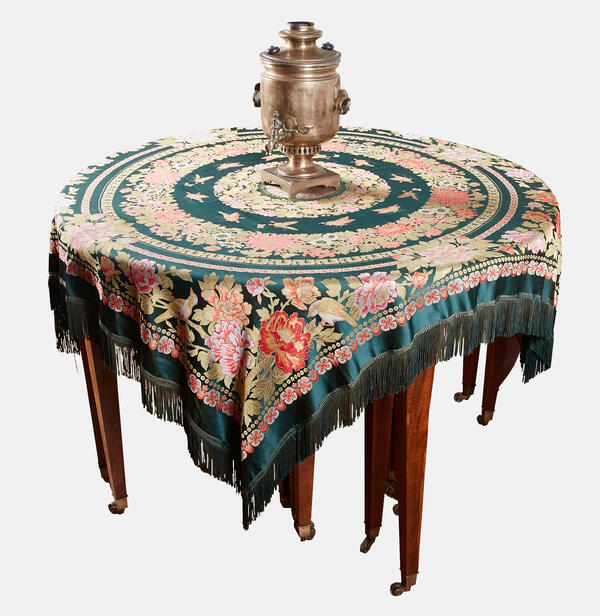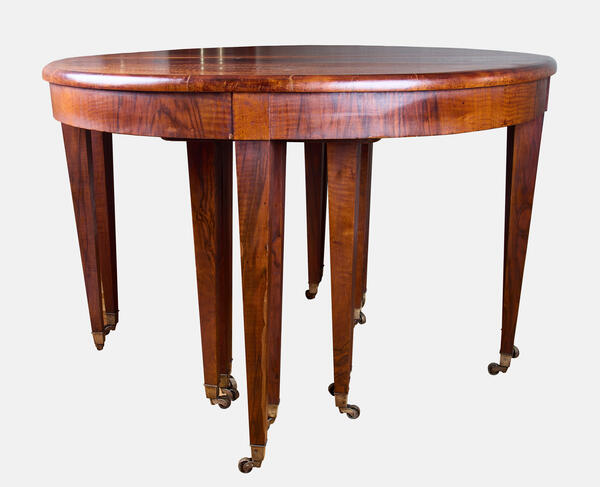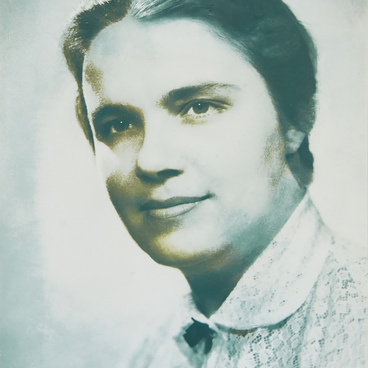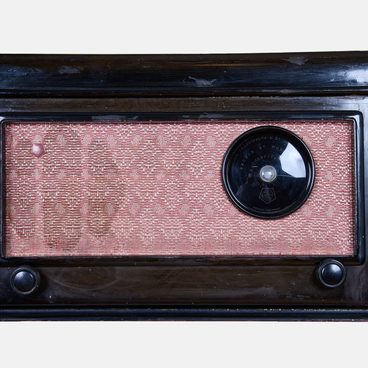A gateleg table is a round extendable dining table, which has special inserts and can acquire an oval shape and be extended up to four to six meters. The tables are equipped with a special sectional mechanism that helps to gradually increase their size by half a meter. Each section is supported by a pair of legs.
In Russia, extendable tables appeared at the very end of the 18th — in the beginning of the 19th century. Before that, all households, even the rich ones, used boards or tabletops that were put on sawhorses. People used tablecloths and drapes to hide this construction. It was not until the 19th century that gateleg tables with a round tabletop replaced this design. At that time, such tables were made from imported mahogany or walnut wood, but Karelian birch or poplar could also be used. But the additional elements that were used to extend the table during the reception of guests were most often made from pine.
There are several versions as to how the name of such a sliding dining table came to be. According to one, the table was called a centipede because it had many legs. According to another version, it was named so because, when extended, it could accommodate 20 people, so there were 40 legs under the table (the Russian word for the centipede can be literally translated as “forty-legged”). No one can say exactly why this piece of furniture has such a fancy name, so each version has the right to exist.
Throughout the 19th century and the beginning of the 20th century, such tables were very popular. They could be found in the dining rooms of city apartments and estates, as well as in fiction books. In his comic poem “Dinners” the poet Baratynsky described this kind of table as follows:
